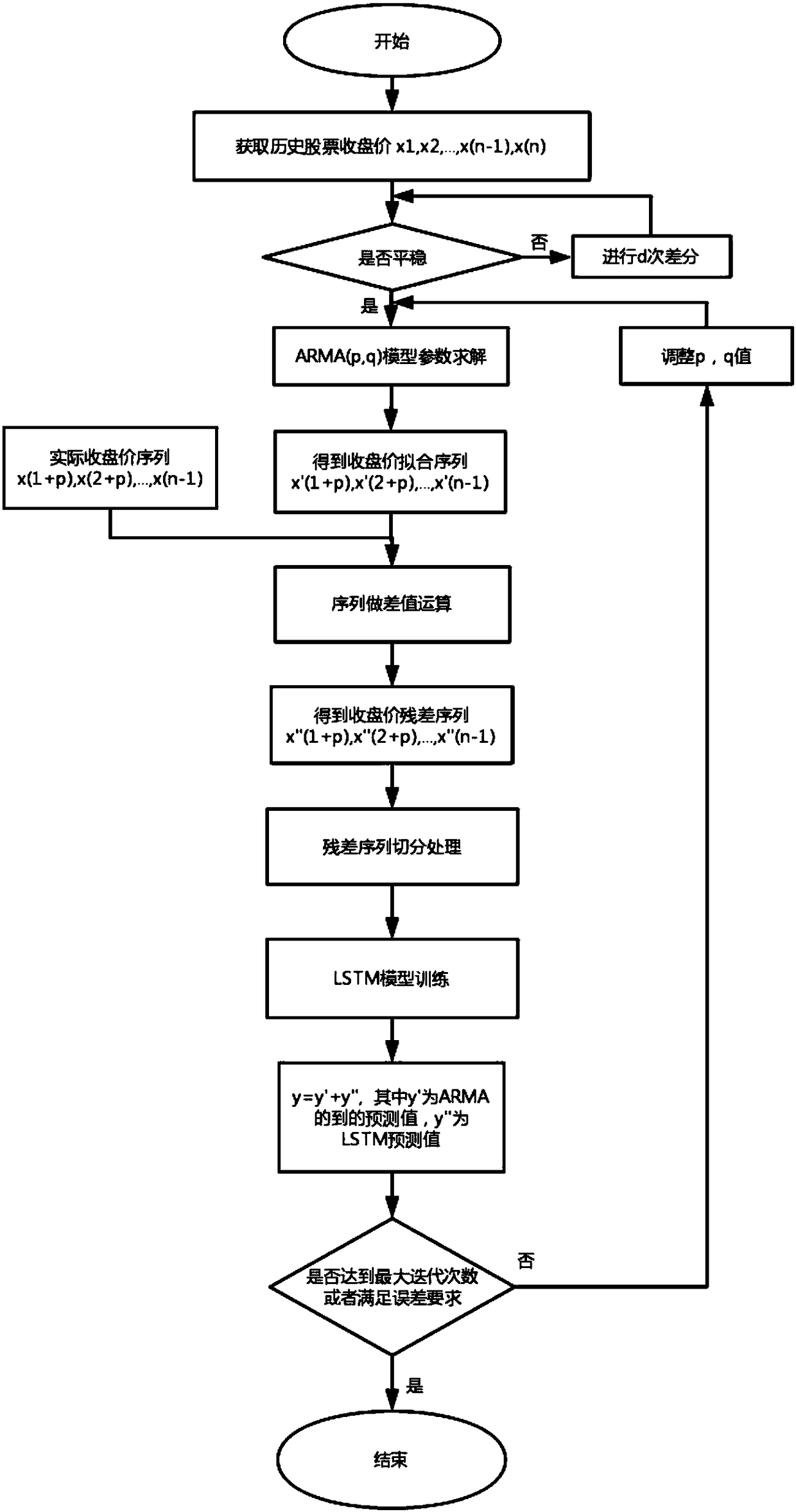Stock prediction method based on ARMA-LSTM model
A prediction method and model technology, applied in the field of machine learning and pattern recognition, can solve the problems of slow training, accurate determination that cannot be quantified, overfitting, etc., to achieve fast learning, reduce errors, and improve the effect of prediction ability.
- Summary
- Abstract
- Description
- Claims
- Application Information
AI Technical Summary
Problems solved by technology
Method used
Image
Examples
Embodiment 1
[0047] In order to illustrate the accuracy and effectiveness of this algorithm, let's take stock forecasting as a specific example to give further details:
[0048] Step 1 Data selection and processing: Without loss of generality, we randomly selected 3 stocks, namely Shanghai Pudong Development Bank (600000), Sinopec (600028), and CITIC Securities (600030), and then selected 160 days in the historical data, Among them, the first 150 days are used for training, and the last 10 days are used to verify the prediction regression error of the model, respectively, Shanghai Pudong Development Bank 2013-11-15-2014-07-14, Sinopec 2015-06-10-2016-02 -02, CITIC Securities 2016-07-13-2017-03-24.
[0049] In step 2, the data is first-order differenced to obtain a stationary data sequence.
[0050] Step 3 Initialize p, q
[0051] Step 4 uses the maximum likelihood estimation method to solve the ARMA model parameters.
[0052] Step 5 Get the fitting sequence of the ARMA model and get the...
PUM
 Login to View More
Login to View More Abstract
Description
Claims
Application Information
 Login to View More
Login to View More - R&D
- Intellectual Property
- Life Sciences
- Materials
- Tech Scout
- Unparalleled Data Quality
- Higher Quality Content
- 60% Fewer Hallucinations
Browse by: Latest US Patents, China's latest patents, Technical Efficacy Thesaurus, Application Domain, Technology Topic, Popular Technical Reports.
© 2025 PatSnap. All rights reserved.Legal|Privacy policy|Modern Slavery Act Transparency Statement|Sitemap|About US| Contact US: help@patsnap.com



